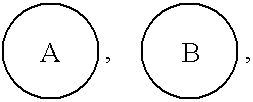Biaryl and biheteroaryl compounds useful in treating iron disorders
a technology of biheteroaryl compounds and biaryl, which is applied in the field of biaryl and biheteroaryl compounds, can solve the problems of increased subsequent disease risk, increased morbidity and mortality, and considerable tissue damage, and achieve the effect of reducing adverse events and increasing the potency of existing or future drug therapies
- Summary
- Abstract
- Description
- Claims
- Application Information
AI Technical Summary
Benefits of technology
Problems solved by technology
Method used
Image
Examples
preparation 1
Preparation of 1-(1-hydroxyethyl)-2-(6-(1-hydroxyethyl)phenoxy)benzene
[0752]To a stirred mixture of bis(2-formylphenyl)ether (2.26 g, 10.00 mmol) in dry ether was added the solution of methylmagnesium bromide (8.40 mL of 3 M solution, 25.0 mmol) dropwise. The mixture was slowly heated to reflux and stirred at reflux for 1 h, cooled to ambient temperature, washed with ammonium chloride solution and water, dried over sodium sulfate and filtered. The solvent was evaporated to afford 1-(1-hydroxyethyl)-2-(6-(1-hydroxyethyl)phenoxy)benzene in 84% yield (2.17 g): 1H NMR (300 MHz, CDCl3) δ 7.58-7.52 (m, 2H), 7.27-7.12 (m, 4H), 6.83-6.77 (m, 2H), 5.21 (q, J=6.5 Hz, 2H), 2.45-2.32 (m, 2H), 1.56 (d, J=6.5 Hz, 6H).
preparation 2
Preparation of 2,2′-thiodibenzoic acid
[0753]A mixture of 2-bromobenzoic acid (4.02 g, 20.00 mmol), 2-mercaptobenzoic acid (3.08 g, 20.00 mmol), potassium carbonate (5.85 g, 42.00 mmol) and copper powder (1.27 g, 20.00 mmol) in water (20 mL) was heated in a sealed tube at 130-140° C. for 3 h, cooled, and filtered. The filtrate was acidified with concentrated hydrochloric acid to afford 2,2′-thiodibenzoic acid as a white solid in 98% yield (5.40 g): mp 226-227° C.; 1H NMR (300 MHz, DMSO-d6) δ 13.10 (s, 2H), 7.80 (dd, J=7.6, 1.5 Hz, 2H), 7.46-7.38 (m, 2H), 7.36-7.28 (m, 2H), 7.07 (dd, J=7.6, 1.2 Hz, 2H).
Preparation 2.1
Preparation of 6,6′-thiobis(3-fluorobenzoic acid)
[0754]Following the procedure as described in Preparation 2, making non-critical variations using 5-fluoro-2-mercaptobenzoic acid to replace 2-mercaptobenzoic acid to react with 2-bromo-5-fluorobenzoic acid, 6,6′-thiobis(3-fluorobenzoic acid) was obtained as a colorless solid in 92% yield: 1H NMR (300 MHz, DMSO-d6) δ 13.45 ...
preparation 3
Preparation of dimethyl 2,2′-thiodibenzoate
[0786]To a stirred solution of 2,2′-thiodibenzoic acid (1.37 g, 5.00 mmol) in methanol (40.0 mL) was added several drops of thionyl chloride. The mixture was stirred at refluxing temperature for 2 h. Methanol was removed and the solid residue was dissolved with ether, washed with saturated sodium bicarbonate solution and water, dried over sodium sulfate and filtered. The filtrate was concentrated in vacuo. Dimethyl 2,2′-thiodibenzoate was isolated as a colorless solid in 98% yield (1.48 g). 1H NMR (300 MHz, CDCl3) δ 7.82 (dd, J=7.7, 1.6 Hz, 2H), 7.51-7.43 (m, 2H), 7.42-7.34 (m, 2H), 7.12 (dd, J=7.7, 1.6 Hz, 2H), 3.73 (s, 6H).
Preparation 3.1
Preparation of dimethyl 6,6′-thiobis(3-fluorobenzoate)
[0787]Following the procedure as described in Preparation 3, making non-critical variations using 6,6′-thiobis(3-fluorobenzoic acid) to replace 2,2′-thiodibenzoic acid, dimethyl 6,6′-thiobis(3-fluorobenzoate) was obtained as a white solid in 88% yield:...
PUM
| Property | Measurement | Unit |
|---|---|---|
| body weight | aaaaa | aaaaa |
| temperature | aaaaa | aaaaa |
| temperature | aaaaa | aaaaa |
Abstract
Description
Claims
Application Information
 Login to View More
Login to View More - R&D
- Intellectual Property
- Life Sciences
- Materials
- Tech Scout
- Unparalleled Data Quality
- Higher Quality Content
- 60% Fewer Hallucinations
Browse by: Latest US Patents, China's latest patents, Technical Efficacy Thesaurus, Application Domain, Technology Topic, Popular Technical Reports.
© 2025 PatSnap. All rights reserved.Legal|Privacy policy|Modern Slavery Act Transparency Statement|Sitemap|About US| Contact US: help@patsnap.com



